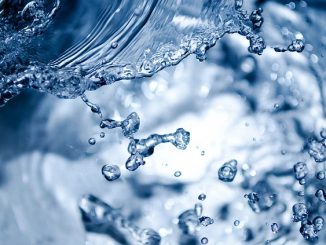
One of the greatest ironies of our world is that our planet is covered mostly in water, yet billions of people do not have access to clean drinking water. To help resolve this problem, a team of researchers led by Omar Yaghi, a chemistry professor at the University of California, Berkeley (UC Berkeley), and Evelyn Wang, a mechanical engineer at Massachusetts Institute of Technology (MIT), have developed a solar-powered device that can be used to harvest water from the air. You read it right. Much like magic, this device is capable of making water appear out of thin air. Well, you get the drift.
To be clear, the concept of harvesting water from the air is not entirely new. A few companies (such as Water Gen and EcoloBlue) have already demonstrated that the concept is feasible, as long as certain requirements are met. Typically, this means having a power source (dew harvesting) or high humidity levels (fog harvesting).
The team wanted to go a different route, though, by creating a solution that can be used by everyone, especially those who need it most — the ones living in dry regions and don’t have access to electricity. To achieve this, the team turned to a class of synthetic materials referred to as MOFs, or metal-organic frameworks, which, incidentally, were pioneered by Yaghi over 2 decades ago.
MOFs are made up of metals linked together with organic molecules, creating a rigid, porous structure that can trap gas and liquid molecules, similar to what a sponge can do to water. So far, MOFs are being used to capture several kinds of gases including hydrogen, methane and carbon dioxide. This time, a zirconium-based MOF is being used to capture water molecules.
Work on this water harvester began at UC Berkeley in 2014. The MOF is sandwiched between a solar absorber and a condenser plate, then placed inside an open-air chamber.
At night, the chamber is opened. This allows ambient air to diffuse through the MOF, and water molecules to attach to its surface. When morning comes, the chamber is closed. Then, as sunlight enters the room, it heats up the trapped water molecules, freeing and driving them towards the condenser. Because of the temperature difference between the condenser and the outside air, condensation takes place — vapor is turned into liquid water, and the droplets formed drip into the collector.
Based on the results of the study, over a period of 12 hours using 1 kilogram of MOF at humidity levels as low as 20%, the device prototype was able to extract 2.8 liters of water from the air. Or, that’s about a glass of water per hour.
Wang said they wanted to show that if you happen to be stranded in some place where it’s humid and there’s no water (like in the middle of a desert), you’ll be able to survive using something like their device which doesn’t use any kind of power other than sunlight to let water flow. He says that a person needs about a Coke can of water per day. And an efficient water-harvesting device can easily churn this amount in less than an hour.
As Yaghi said in a report that came out of Berkeley News: “It’s not just that we made a passive device that sits there collecting water; we have now laid both the experimental and theoretical foundations so that we can screen other MOFs, thousands of which could be made, to find even better materials. There is a lot of potential for scaling up the amount of water that is being harvested. It is just a matter of further engineering now.”
On a small scale, this method of water harvesting has the potential to provide households in underdeveloped nations with their own drinking water by producing their own. Yaghi calls it ‘personalized water’.
On a larger scale, it can be used to produce huge amounts of water to irrigate farms.
The team admits that many improvements need to be done prior to commercializing their device. For starters, it’s a bit expensive. Zirconium costs around $150 per kilogram. And because the zirconium-based MOF can only absorb 20% of its weight in water, that pretty much means 80% of the cost is just being wasted.
To make the device more practical, they have to find the right material that has a higher absorption rate and isn’t as costly. They are also working on improving the harvesting process so it can continuously produce water, not just when the sun is out.
The study was recently published in the journal Science.
Disclaimer: This page contains affiliate links. If you choose to make a purchase after clicking a link, we may receive a commission at no additional cost to you. Thank you for your support!




Leave a Reply